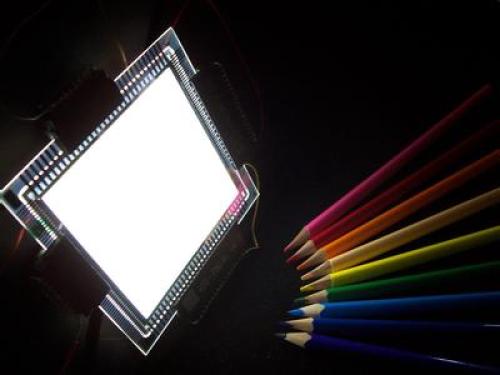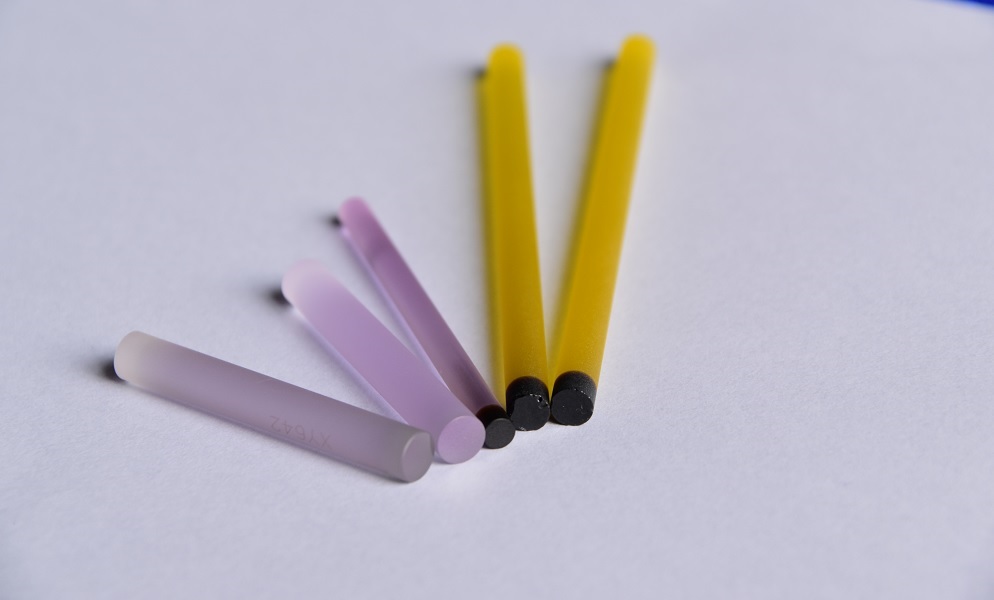OLED lighting market development trend analysis

Because OLED lighting has a flat light emission and does not hurt the eye, it attracts panels, materials, and equipment manufacturers to invest in the development and actively develop new materials, equipment, and process solutions to overcome material degradation and large-size development challenges. Lighting market huge business opportunities.
Organic light-emitting diodes (OLEDs) had a market size of only 500 million U.S. dollars in 2009, but they have continued to attract investment from the industry in subsequent years, which is really interesting. In fact, the reason why OLED has sparked an upsurge of development is partly due to its use on mobile phone screens such as the Samsung Galaxy series. The introduction of mobile screens has enabled OLED revenues to climb to $3 billion in 2011 and reached in 2012. 6 billion US dollars.
In addition to mobile phone screens, lighting is another potential application for OLEDs. Although OLED lighting currently accounts for only a small part of the overall output value, the huge potential lighting market is expected to bring new revenue opportunities to OLED players.
LED efficiency / cost advantage OLED lighting still needs time to develop LED solid-state lighting to improve the traditional lighting has attracted many attention in the industry, which also led to OLED future how to cut into the lighting market, most people think that OLED will direct and LED technology Competition means that OLEDs must overcome the current great performance and cost gaps compared with LEDs.
At this stage, LED lighting luminous efficiency is 110 lumens per watt (lm / W), while commercial OLED products up to 60lm / W; As for costs, LED technology costs almost $ 5 / 1000 lumens (klm), OLED is about 350 USD/klm indicates that there is still a clear gap between the two technologies in the development of lighting applications. As a result, OLED technology is bound to take advantage of the unique advantages of its light is not dazzling, the lamp size can be made large and flat, in order to successfully seize the lighting market a place.
Compared with standard LEDs and other light sources, the need for shades to cover strong light may cause problems of vision loss. The OLED light source may provide illumination without shading, and is another lighting future that is still in development; furthermore, OLEDs may be used. The use of many different styles of material combinations and structures has the potential to dramatically increase luminous efficacy.
Currently, OLED manufacturers have increased the efficiency by increasing the driving current, but at the cost of a shorter device lifetime; at the same time, the luminescence efficiency can also be improved by stacking OLED structures in series, such as stacking two different structures during the deposition process. Together, driving with the same current will produce almost twice as much light. As a result, related industries can also use lower currents to drive stacked OLED panels, which can generate the same luminosity and increase reliability, overcoming the problems of high OLED current lifetime.
Although OLED lighting has potential for development, if it is regarded as a direct rival of LED in the lighting market, the difference in performance and cost may make OLED out in the foreseeable future. However, under the circumstance of OLED lighting technology and luminaire design, there are still two kinds of solid-state lighting technologies that need to exist at the same time. This is not related to whether OLEDs are required to compete with LEDs or not. The application is not exactly the same.
Considering technical differences other than cost and luminous efficiency, if the OLED fully achieves the same level as the LED, it will be a great achievement. In general, commercial LED products have a guaranteed lifetime of 20 to 25 years, and OLEDs only have 5 to 10 years. The main reason is that some materials in OLED are eroded at a faster rate than other materials, and the color will change, which is in some industries or automobiles. The application is unacceptable.
The material cost/barrier layer is designed so that the OLED breaks through the erosion of the key OLED material because the organic material layer is sensitive to oxygen and moisture and must be carefully coated and protected with a permeation barrier. This will create an elastic design for the OLED panel. It is a serious challenge that manufacturers are currently hard to make cost-effective, transparent and bendable barrier layers that can withstand high temperatures during the manufacturing process.
At this stage, 100% of commercial lighting OLEDs use glass as the substrate for the thin film layer and place a glass plate as a physical protective layer and a moisture/oxygen barrier layer (Fig. 1). However, even with these components, OLED organic materials are used. It will still be eroded in high temperature environments. This situation will cause problems with accelerating pressure testing above 85°C.
On the other hand, for manufacturers with traditional lighting backgrounds, it is difficult to use OLED professional technology as lighting equipment, so OLED industry operators must also propose countermeasures to overcome the commercial and technical challenges of lighting. In particular, OLED panels and traditional lighting equipment manufacturers are now going their own way. In a short period of time, OLEDs will hardly penetrate the lighting market. The possible solution in the future is for OLED panel manufacturers to produce their own lighting equipment, which will be promoted by technology rather than commercialization. Traditional marketing strategy.
But another challenge is how to reduce OLED manufacturing expenditures. Three major problems can be found in the cost breakdown of commercial OLED panels. First, the manufacturing yield of OLEDs is very low. Manufacturers do not have sufficient control capability, technology or experience in high-yield manufacturing processes. Second, the cost of constructing OLED production lines is high. For example, OSRAM has invested 20 million pounds in OLED pilot production line in Regensburg, Germany. The third is the high cost of materials and equipment, and the high cost of OLED production lines. Because this is an emerging technology, there is no standard equipment.
Since each OLED trial production line will take several months to build, equipment manufacturers also share the cost. Although OLED manufacturers claim to switch to ultra-thin layers, which can offset the high cost of complex molecular materials, most analysts believe that it is only half true because the cost of materials is related to the materials used in manufacturing and lighting panels. Most of the production uses The material is deposited on the reactor wall or is not deposited at all, causing material waste.
In any case, OLED lighting has certain application advantages, and there are still many opportunities for improvement in the future of manufacturing technologies. Therefore, YoleDeveloppement predicts that the cost of OLEDs in the next two years is expected to drop to the current level of one-third, mainly due to the introduction of newer generations into the industry. The production equipment will use a larger mother glass substrate in the deposition reactor to improve the mass production efficiency. At present, manufacturers are most commonly used 47 cm × 37 cm of the second generation of mother glass, can produce a few standard 10 cm × 10 cm OLED panel.
Supply chain to fully support the large-size OLED commercial future Mother glass and OLED panel products will continue to evolve towards the large size, the main consideration of 10 cm × 10 cm OLED panel is not enough to illuminate a room, may require 10 or more films, This will result in additional costs for each panel, such as trimming and required connection components. If only a larger panel is used, those manufacturing costs will naturally be reduced.
Laser crystals of various materials including Neodymium Doped Yttrium Aluminum Garnet (Nd:YAG), Yb-doped Yttrium Aluminum (Yb:YAG), Nd-doped Yttrium Orthovanadate ( Nd:YVO4 ), Nd-doped Gadolinium Orthovanadate ( Nd:GdVO4 ), Cr doped Yttrium Aluminum Garnet ( Cr4+:YAG ) and diffusion bonded composite crystal ( DBC crystal ) are available from Coupletech Co., Ltd.
Coupletech could supply many kinds of Laser Crystal with larger dimension, higher damage threshold, higher conversion efficiency and higher reliability for higher power Solid-state laser applications. We have strict quality control and continuous innovation. Coupletech's various finished laser rods, laser crystal, slabs and thin wafers as well as supplying laser crystal with brewster's angle, which is widely for use in industrial, medical and scientific applications.

S
Laser Crystal
Yb:YAG Crystals,Nd:YAG Crystals,Nd:YVO4 Crystals,Cr:YAG Crystals,Diffusion Bonded Crystals
Coupletech Co., Ltd. , https://www.coupletech.com